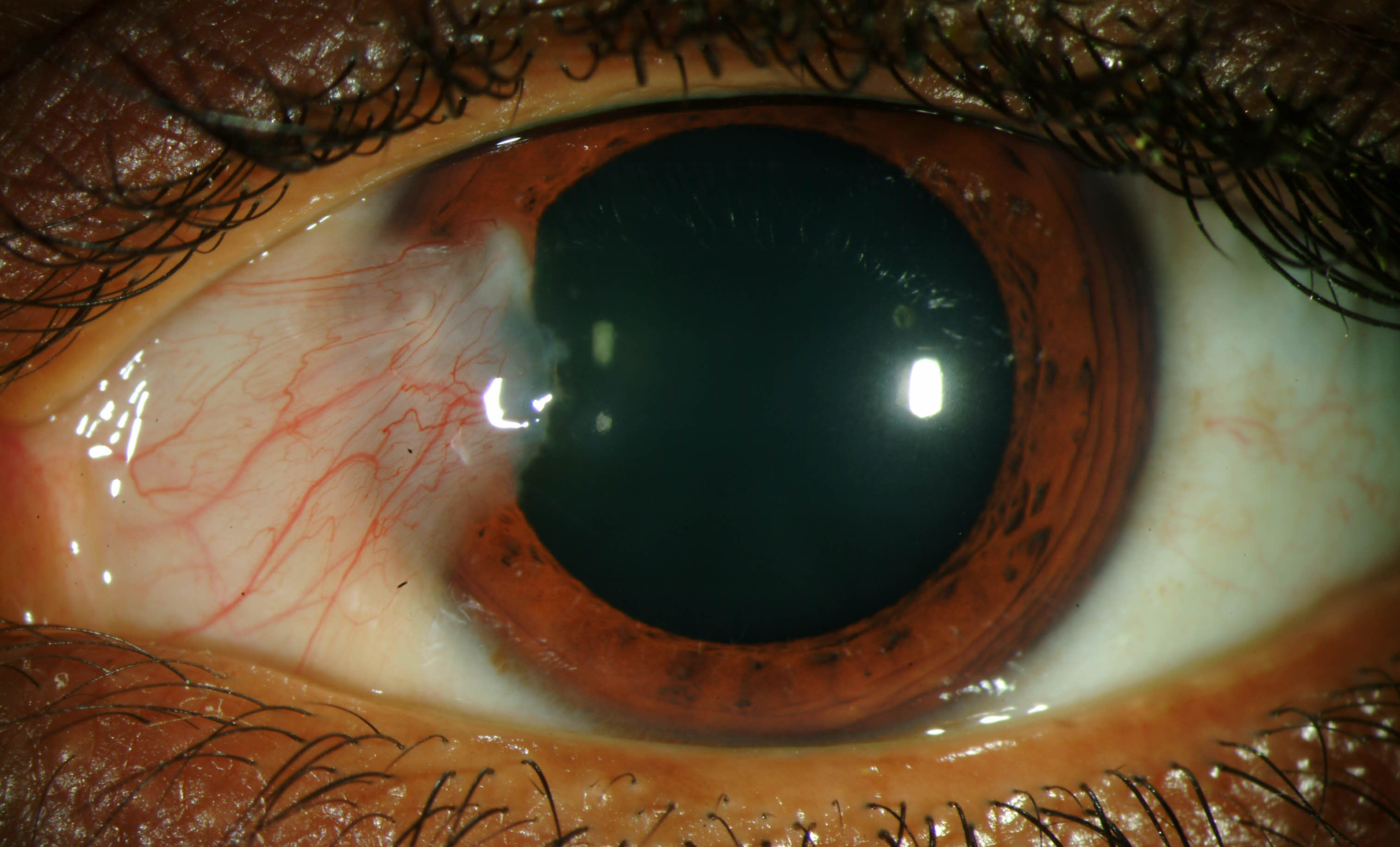 |
| Pterygium and neoplastic disease may not overlap as much as previously thought. Photo: Christine Sindt, OD. Click image to enlarge. |
Clinicians can sometimes be concerned when encountering a pterygium, as the conjunctival growth shares risk factors with those of ocular surface squamous neoplasia (OSSN); fortunately, they coexist in only a minority of cases. According to a new study published in Eye, rates of OSSN in pterygium specimens sent for histopathological analysis vary between 0% and 10%, with the highest rates reported in countries with high levels of UV light exposure. With a lack of data in European populations, the aim of this study was to evaluate the prevalence of coexistent OSSN or other neoplastic disease in clinically suspected pterygium specimens sent to a specialist ophthalmic pathology service in London.
The retrospective review included histopathology records of patients with excised tissue submitted as suspected “pterygium” between 1997 and 2021, totaling 2,061 specimens of pterygia.
The included specimens had a comorbid prevalence of neoplasia of 0.6% (n=12). Half had the preoperative clinical suspicion of possible OSSN. Of those cases without clinical suspicion preoperatively, only one was diagnosed with invasive squamous cell carcinoma of the conjunctiva.
“Rates of unexpected diagnoses are reassuringly low,” the study authors wrote in their paper. “These results may challenge accepted dogma and influence future guidance for the indications for submitting nonsuspicious pterygia for histopathological analysis.”
Quhill H, Magan T, Thaung C, Sagoo MS. Prevalence of co-existent neoplasia in clinically diagnosed pterygia in a UK population. Eye. May 26, 2023. [Epub ahead of print]. |

